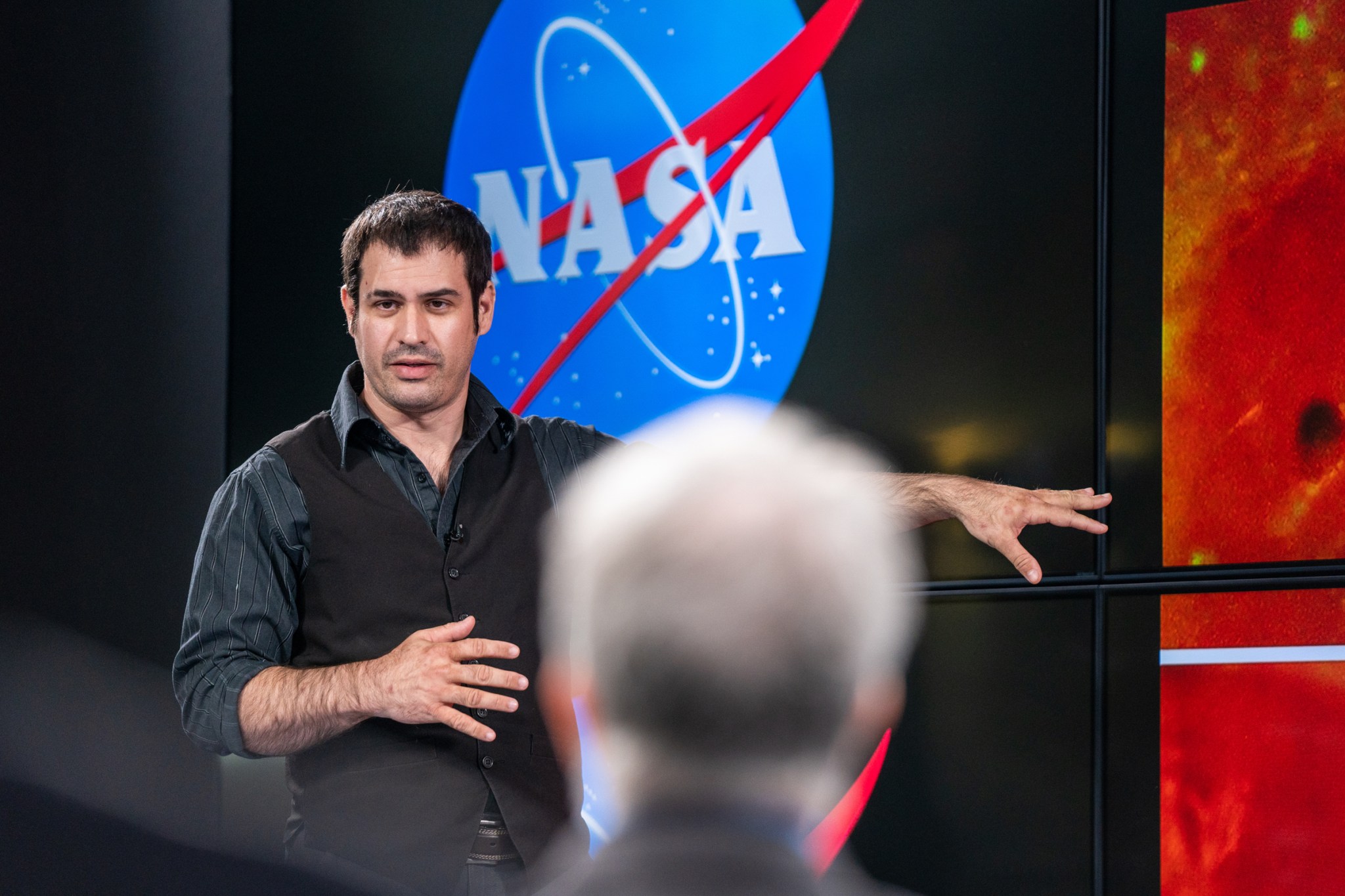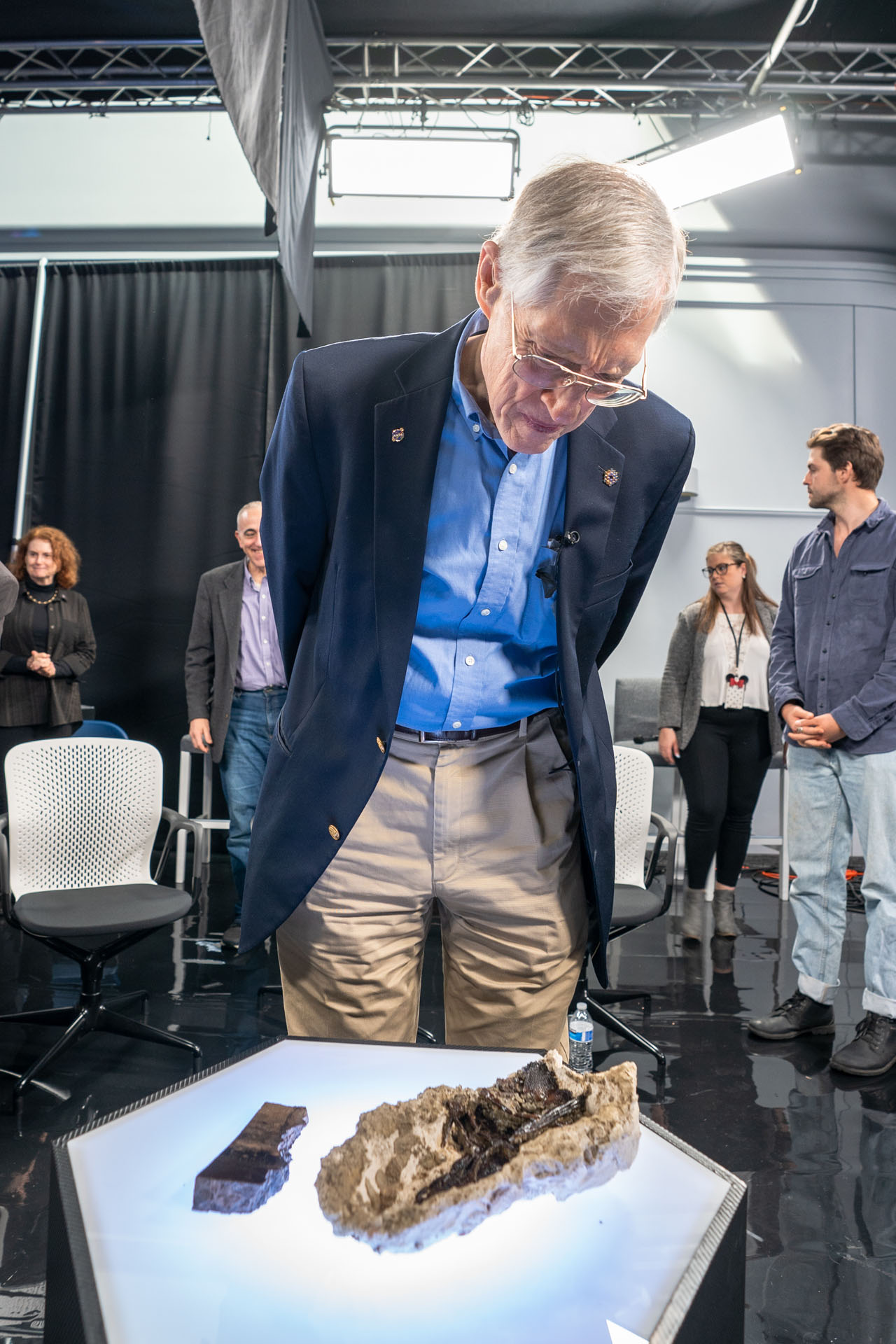A bad day for dinosaurs was the subject of an engaging hour-and-a-half for both paleontologists and NASA researchers.
Paleontologist Robert DePalma, postgraduate researcher at University of Manchester UK and adjunct professor for the Florida Atlantic University Geosciences Department, gave a guest talk at NASA’s Goddard Space Flight Center in Greenbelt, Maryland, on April 6. DePalma discussed his team’s excavations in North Dakota and shared findings they tie to an asteroid strike off the coast of present-day Mexico that led to the mass extinction of the dinosaurs and many other lifeforms 66 million years ago.
“The way a lot of us at Goddard started thinking of this was the collision, quite literally, between space science and Earth,” said Goddard Deputy Center Director Anne Kinney. Because of that overlap of scientific fields, a panel of Goddard scientists with expertise ranging from astrophysics, to planetary science, climate, and hydrology met with DePalma after his presentation for a discussion of the findings.
“Science is a community activity,” said Goddard Chief Scientist Jim Garvin. “When connections and science come together and paint a bigger picture than any one line of thought, that’s exciting, that’s thrilling. We all, as scientists, hope for that.”
Credits: NASA’s Goddard Space Flight Center
Download this video and supporting materials in HD formats: https://svs.gsfc.nasa.gov/14140
DePalma presented as a guest of the Goddard Scientific Colloquium, which has brought outside researchers to the center since 1965, to discuss all manner of compelling topics. Past presenters have included the likes of astronomer Carl Sagan, physician Anthony Fauci, and hundreds of other experts.
To accompany DePalma’s lecture, his team brought preserved fossils of fish, footprints, amber, and triceratops skin from the North Dakota dig site, known as Tanis.
“The really exciting thing was, you don’t often get to touch the past,” Kinney said. “To see it right there in front of you, it makes history so personal. … It is 66 million years ago, but it’s right there in front of you at the same time.”
“I think for me the moment of, ‘Oh my gosh – we’re not in Kansas anymore,’ was when Robert showed these little preserved glass spheres,” Garvin said. Tektites, as scientists call these small and often beadlike bits of vaporized rock, are common byproducts of impact events, both on Earth and on other worlds.
According to DePalma and his team, tektites from the dinosaur-ending collision off Mexico’s Yucatán Peninsula became lodged in the gills of fish: the force of the impact was strong enough to wash marine life some 3,000 miles north to present-day North Dakota, where DePalma and his team excavated an unusual fossil jumble of saltwater and freshwater fish along with land-dwelling dinosaurs.
If DePalma and his team are right and these tektites contain remnants of the asteroid itself, “This example of what might be a little tiny fragment, maybe micrograms, of the colliding asteroid – the fact that a record of that is preserved, would be mind-blowing,” said Garvin, who has studied impact cratering on Earth and Mars extensively.
The conversation around DePalma’s research highlighted how events in space can affect life on Earth. That interconnection is one of the many reasons why NASA studies the solar system so extensively.
“We are in space together, and connecting life on Earth to asteroid impacts is part of our history,” Garvin said. “That is very cool.”
Related Links
- Download video of Robert DePalma’s colloquium, the scientist roundtable, and other supporting materials from NASA Goddard’s Scientific Visualization Studio
- Additional colloquium photos on Goddard’s Flickr
- Goddard Scientific Colloquium website
By Caroline Capone
NASA’s Goddard Space Flight Center, Greenbelt, Md.
Media contact: Rob Garner
NASA’s Goddard Space Flight Center, Greenbelt, Md.


























